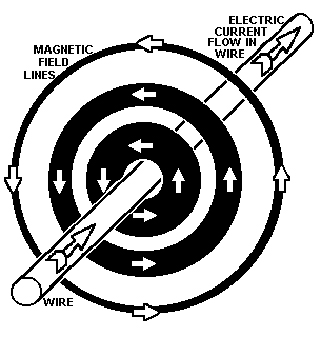Reducing EMF Radiation Exposure in Your Car: A Comprehensive Guide
Are you concerned about EMF radiation and its harmful effects on your health? You might already know about the sources of EMF radiation in your daily life, like cell phones, WiFi, and microwave ovens. However, there’s one often-overlooked source that could be exposing you to significant levels of EMF radiation: your car.
Sources of EMF Radiation In Your Car
Over the past decade, automotive technology has advanced rapidly, equipping cars with sophisticated features for convenience, safety, and luxury. Unfortunately, with these technological advancements comes an increase in the radiation danger posed by automobiles.
Many of the modern features in cars, such as Bluetooth, radar, WiFi hotspots, and communication systems, emit substantial amounts of EMF radiation. This applies to all types of vehicles, including gas, diesel, electric, and hybrid cars. These features result in elevated levels of various EMF fields, including electric, magnetic, radio frequency, and dirty electricity.
Additionally, the extensive electrical wirings throughout cars, connecting various components like fuel pumps, ventilation fans, tire pressure sensors, and more, contribute to the density of EMF fields in your car. Prolonged exposure to EMF radiation has been associated with health issues like leukemia and brain tumors.
Furthermore, since 2010, cars have been equipped with various radiofrequency emitting devices, especially electric and hybrid cars. Despite their safety and convenience benefits, these devices emit varying levels of radiofrequency radiation, which has been classified as a potential human carcinogen by the International Agency for Research on Cancer (IARC). Studies have shown associations between RF radiation and increased risks of tumors and other health problems.
EMF Radiation from Car Batteries
Car batteries, particularly in electric and hybrid vehicles, are another powerful source of EMF radiation. Unlike gas and diesel cars that only require batteries to ignite the engine, electric cars rely on batteries for almost all functions. The position of these batteries is a major concern, as they are often placed close to the driver and passenger’s seat, resulting in increased exposure to EMF radiation.
Electric cars use AC batteries instead of the conventional DC batteries found in most gas and diesel vehicles. AC batteries produce considerable electromagnetic fields, which, with long-term exposure, could trigger health problems in humans. Charging electric vehicles also produces significant amounts of dirty energy, leading to inflammatory responses in humans.
Although electric and hybrid vehicles may expose you to higher levels of EMF radiation, gas and diesel cars are not entirely free from EMF exposure. Various components such as alternators, fuel pumps, spark plugs, turning motors, batteries, and wires contribute to some level of EMF radiation. The accumulation of these emissions can have adverse effects on human health, including impacts on male fertility.
Protecting Yourself from EMF Radiation in Your Car
Considering the prevalence of EMF radiation in cars, regardless of the type, it’s crucial to take measures to protect yourself and your loved ones. While it’s challenging to completely avoid driving cars, you can reduce your exposure and minimize potential health risks.
Types of Vehicles and Their EMF Radiation Levels
The type of car you drive can significantly influence your level of EMF radiation exposure. Factors such as the type of car battery and proximity to technological devices like GPS systems play a role in determining the exposure level. Let’s explore the differences between electric cars, hybrid cars, and self-driving cars to understand your exposure better and identify ways to mitigate it.
Electric and Hybrid Cars: Potential Cancer Risks
Research on the EMF radiation from electric and hybrid cars has yielded conflicting results, largely due to industry-funded studies with vested interests. However, numerous peer-reviewed laboratory studies over the years have shown biologic effects from limited exposures to ELF EMF, suggesting that the current guidelines established by the International Commission on Non-Ionizing Radiation Protection (ICNIRP) might be inadequate.
Magnetic fields have been classified as “possibly carcinogenic” by the International Agency for Research on Cancer since 2001. Therefore, it’s crucial to apply the precautionary principle and design consumer products, especially hybrid and electric automobiles, to minimize consumers’ exposure to ELF EMF.
Proposed Manufacturing Guidelines for Safer Electric Vehicles
In January 2014, SINTEF, the largest independent research organization in Scandinavia, proposed manufacturing design guidelines to reduce magnetic fields in electric vehicles. All automobile manufacturers should adopt these guidelines to prioritize their customers’ safety.
Advocating for More Research and Better Regulation
Given the potential health risks associated with EMF radiation from cars, it’s essential to demand adequate funding for high-quality research on electromagnetic fields, independent of industry influence. A well-funded research and education initiative could make a significant impact on public health. Governments must take the initiative to ensure our safety.
The Link Between EMF Radiation and Human Health
To understand the potential impact of EMF radiation from your car, it’s essential to delve deeper into its relationship with human health. While EMF radiation is invisible and intangible, it can have tangible effects on the human body.
EMF Radiation and Cancer Risk
One of the most concerning aspects of EMF radiation is its potential link to cancer. The World Health Organization’s International Agency for Research on Cancer (IARC) classifies radiofrequency electromagnetic fields as “possibly carcinogenic to humans” based on some studies that suggest a possible association with certain types of cancer.
A study conducted by the National Toxicology Program (NTP) in the United States found evidence of clear evidence of carcinogenic activity in male rats exposed to radiofrequency radiation. However, the results were not entirely conclusive for female rats or mice.
Similarly, the aforementioned Yale study found an elevated thyroid cancer risk in people exposed to radiofrequency radiation, similar to the type of radiation emitted by cell phones. Moreover, research published in the International Journal of Oncology suggests that exposure to radiofrequency electromagnetic fields can affect gene expression and may have implications for cancer development.
While the evidence is not yet definitive, it highlights the importance of adopting precautionary measures to minimize EMF radiation exposure.
Other Health Concerns
In addition to cancer risk, EMF radiation has been associated with other health concerns, although more research is needed to establish definitive causation. Some of the potential health issues linked to EMF radiation exposure include:
- Neurological Effects: Studies have suggested that EMF exposure may influence the nervous system, potentially affecting cognitive functions, memory, and sleep patterns. However, further research is required to establish clear links.
- Reproductive Health: Some research has indicated a possible association between EMF radiation and adverse effects on male fertility, such as reduced sperm count and motility. While more studies are needed, the findings are concerning and warrant further investigation.
- Electrosensitivity: A small percentage of the population claims to experience electrosensitivity, a condition characterized by various symptoms like headaches, fatigue, and difficulty concentrating, which they attribute to EMF exposure. However, scientific evidence supporting the existence of electrosensitivity remains limited and inconclusive.
- Childhood Leukemia: Some studies have reported a potential link between exposure to EMF radiation, particularly magnetic fields, and an increased risk of childhood leukemia. The International Agency for Research on Cancer (IARC) has classified extremely low-frequency magnetic fields as “possibly carcinogenic to humans” based on this research.
It is important to note that while these associations are noteworthy, more research is needed to establish conclusive evidence and better understand the mechanisms through which EMF radiation may affect human health.
The Importance of Safe EMF Exposure Levels
While it is challenging to entirely eliminate EMF radiation from our lives, it is essential to strive for safe exposure levels. The International Commission on Non-Ionizing Radiation Protection (ICNIRP) sets guidelines for EMF radiation exposure to ensure public safety. However, these guidelines have faced criticism for potentially being inadequate to protect against long-term, low-level exposure.
Some experts argue that EMF exposure guidelines should be more conservative, given the possibility of cumulative effects over time. Additionally, they emphasize the importance of researching the potential health impacts of exposure to multiple sources of EMF radiation simultaneously.
As the global reliance on technology continues to grow, governments and regulatory bodies need to prioritize funding for independent research into EMF radiation’s health effects. It is crucial to avoid conflicts of interest and ensure that research findings guide the development of more robust safety standards.
Protecting Yourself and Your Loved Ones
While comprehensive research is ongoing, taking precautionary measures to limit EMF radiation exposure can contribute to overall well-being. Here are some practical steps you can take to protect yourself and your loved ones:
1. Minimize Cell Phone Use: Use hands-free options and keep your phone away from your body when not in use. Avoid sleeping with your phone near your head.
2. Maintain Distance: When using electronic devices, maintain a safe distance, especially during prolonged use. This includes laptops, tablets, and other devices emitting electromagnetic fields.
3. Create EMF-Free Spaces: Designate certain areas in your home as EMF-free zones where electronic devices are not allowed, such as bedrooms or relaxation areas.
4. Use Wired Connections: Whenever possible, opt for wired connections over wireless connections to reduce exposure.
5. Shielding and EMF Harmonizers: Consider using EMF shielding products or harmonizers, such as Airestech Lifetune devices, to minimize exposure to harmful EMF radiation.
6. Educate Yourself: Stay informed about the latest research and developments regarding EMF radiation and its potential impacts on health. Being well-informed can help you make better choices.
7. Advocate for Safety: Support initiatives that call for more research on EMF radiation and advocate for stronger safety regulations to protect public health.
Conclusion
As our lives become increasingly intertwined with technology, understanding the potential health risks associated with EMF radiation is paramount. EMF radiation from cars, cell phones, and various electronic devices may pose health concerns, and while the evidence is still evolving, taking precautionary measures to reduce exposure is advisable.
Remember that minimizing EMF radiation exposure not only benefits your health but also helps create a safer environment for everyone. Stay informed, take proactive steps to protect yourself and your loved ones, and advocate for research and safety standards that prioritize public health and well-being in the digital age.




